Sponsorship deals with top music artists are experiencing significant growth, offering brands a vibrant platform to enhance their market presence and engage diverse audiences. As music artists continue to wield substantial influence and garner massive global followings, their ability to connect with fans makes them highly attractive partners for brands. Over the weekend, I engulfed myself in a series of articles and videos. The SponsorUnited Brands and Top Music Artists 2023/2024 report was perhaps the most fascinating. It is filled with interesting insights that I tried to summarize and internalize below.
1. Music brand partnerships are on the rise: Brand interest in live music events and streaming is increasing as these media activities remain most favored among younger generations. Over the past year, musicians have engaged 11% more with brands – including an 84% surge in endorsements – demonstrating the effective reach and proven investment value of these types of brand partnerships.
2. Social media has made the big stars even bigger: With the proliferation of social media and advances in streaming platforms, the top 200 music artists have collectively increased their follower count by 918M—an increase of 8%—positioning them as more influential platforms than their peers in sports and other celebrities in entertainment. The significant presence of these music artists—with 88M followers on average, compared to 76M for celebrities and 47M for athletes—showcases their unparalleled capacity for brand amplification.
3. Pop, Rap, and R&B artists are at the forefront of brand endorsements: This subset collectively accounts for 70% of the total growth in deals. As the pendulum swings more toward Country, K-Pop, and Latin music, there is a big opportunity to be ahead of the curve by doing deals in those sectors.
4. Music videos offer a compelling case for brand exposure and consumer connection: Music videos are still an underleveraged, viable way for artists to serve as powerful platforms, to market a large audience, and do cool brand alliances. There is a real power and impact to product placement and other covert ways to integrate brands into content. It’s tried and true and once again undervalued.
5. Working directly with artists helps create engagement: Of the largest brand categories across all music sponsorship, only two—Non-Athletic Apparel & Footwear and Cosmetics & Skin Care—prioritize the music artists themselves. The Alcohol and Banking categories, however, tend to focus more on festivals rather than the artists who draw the fans to the festivals. This is a key insight and an arbitrage opportunity! Major beer (Coors Banquet and Molson Canadian), vodka (Tito’s Handmade Vodka), and rum (Bacardi) brands, along with the Citibank and Santander Bank brands, could all potentially enhance their impact by reallocating some of their sponsorship budgets directly to music artists, leveraging the artists’ direct influence to engage fans.
6. While athletic and footwear brands are the largest players in sports, they lag behind in other types of endorsement deals, including those with music artists: Powerhouse brands like Nike and New Balance could seize additional opportunities by expanding their partnership portfolio to include more music artists alongside their traditional roster of athletes.This type of strategic expansion not only diversifies a brand’s endorsement portfolio, but enhances brand visibility and appeal across a broader, more varied consumer base, effectively tapping into new markets and demographics
7. The music industry is rife with opportunities for brands in underrepresented categories to connect with younger audiences: Cultural trends among young people are creating new opportunities for brands. These include the rise of pet ownership post-COVID; a shift towards financial independence facilitated by tech-savvy services; a growing preference for healthier alcohol options; and the need for insurance protection in an uncertain economy. Resonating with this seachange in values and lifestyles is key. Young, hip, global music artists without brand deals have gained nearly 46M new followers over the past year, highlighting significant untapped potential and offering brands a prime opportunity for cost-effective yet powerful marketing collaborations. This is especially relevant with Hispanic and Korean artists who can help brands age younger and get a more global reach.
8. The synergy between brands, artists, and technology is transforming how audiences engage: These partnerships offer more than brand visibility; they provide fans with a unique, interactive experience that yields tangible and measurable business results. The importance of understanding and harnessing fan behavior to drive brand objectives, from data collection and lead generation to direct revenue and remarketing initiatives, is crucial for huge growth and success. The biggest issue I see in music marketing and partnerships is that music artists are clearly more impactful and dynamic, but they are harder to measure. Influencer campaigns with mass and volume can guarantee a number of impressions, which are easy to monitor. This is also the case for social media companies, which dominate the majority of the influencer deals directly at this point. It’s a perfect storm for data-based measurement and, although it’s highly contrived, it’s a clear cut way of measuring spend results.
But musicians are the ultimate influencers, the sherpas of culture, and the key influencer group. They are the true creators, not just of content but of art, music, and distribution. Doing impactful music partnerships is much more meaningful than an influencer platform deal. With some smart paid optimization, you can further hedge the bets for success of a campaign.
The report was a great read and had lots of insights on the state of the industry. I definitely think the study left room for discussion of other areas in which music and brands are winning, especially around gaming, innovation with syncs, music and sports partnerships, innovative tech partnerships, and the long tail of a growing amateur market. These are areas we have covered in the past and are well versed in. The music business is highly Nue-anced, but these deals are extremely impactful. We define KPIs in numerous ways, and that’s a big opportunity for the industry at hand. Drop me a line to discuss ways in which you can supercharge your music partnerships!

